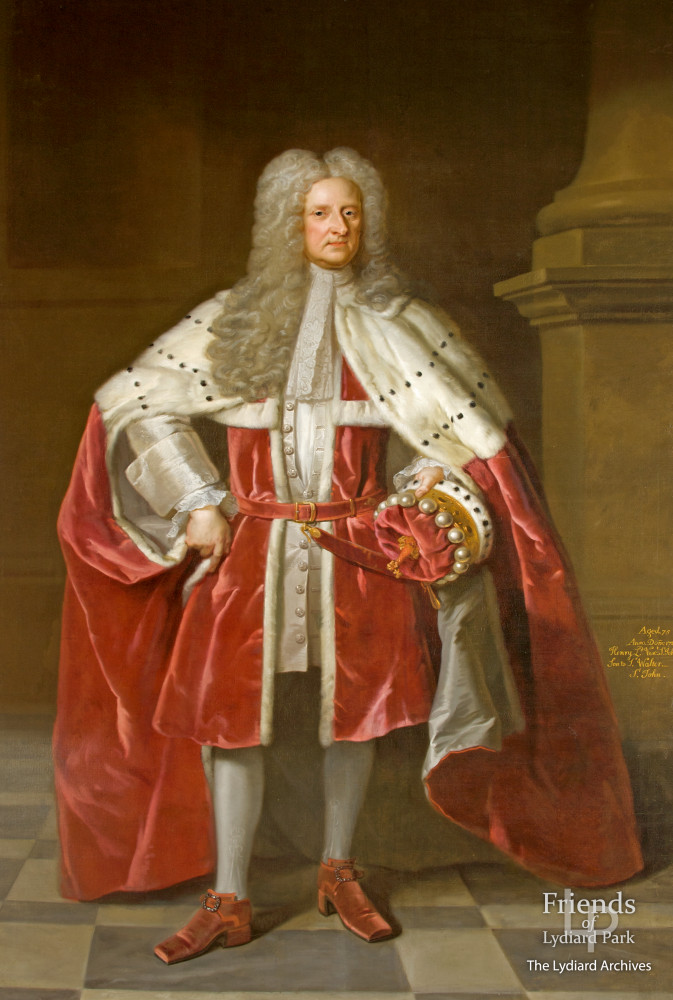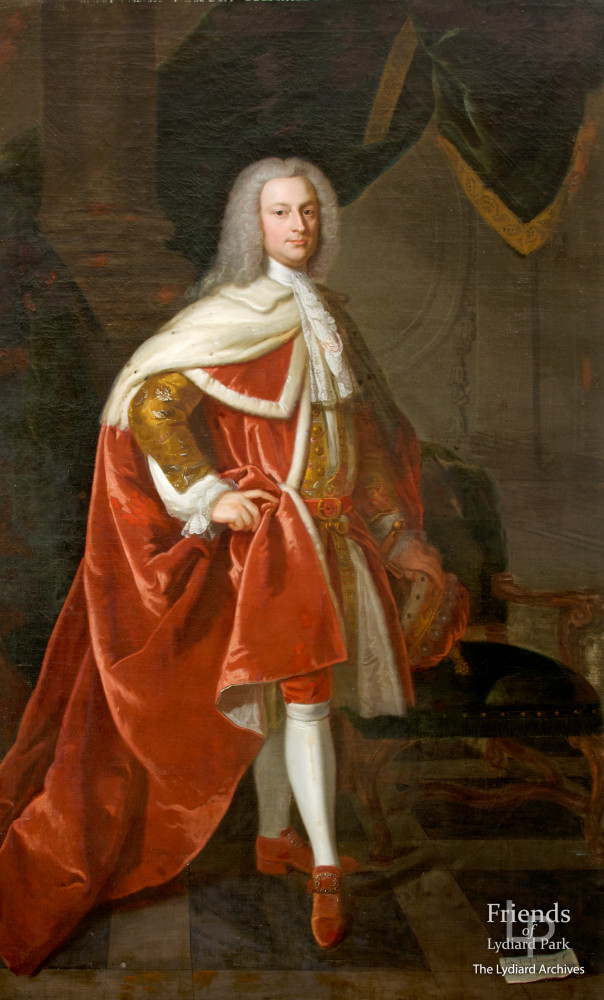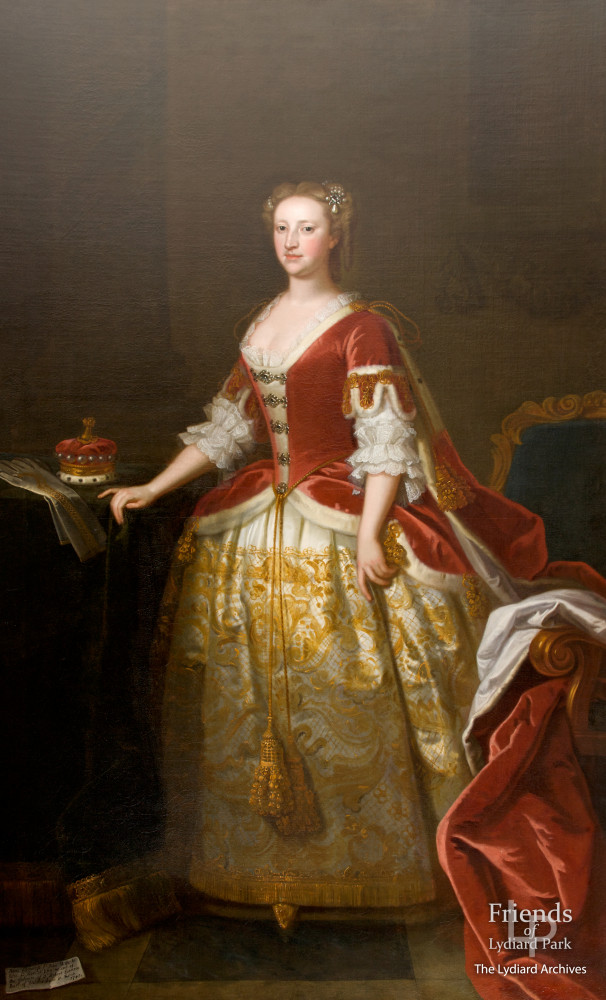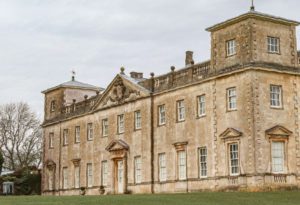The Case of the Coronation Hand-me-downs.
The portrait collection at Lydiard House contains two pairs of portraits that have intriguing similarities. The first pair is Henry, First Viscount St John and his second wife Angelica, painted in coronation robes. Henry and Angelica attended the coronation of King George II and Queen Charlotte on 11 October 1727. This was described by one witness as “the most solemn, magnificent and sumptuous ceremony” at a cost of £9,430. Handel, the leading composer of the day, was commissioned to write four coronation anthems, including the famous ‘Zadok the Priest’.
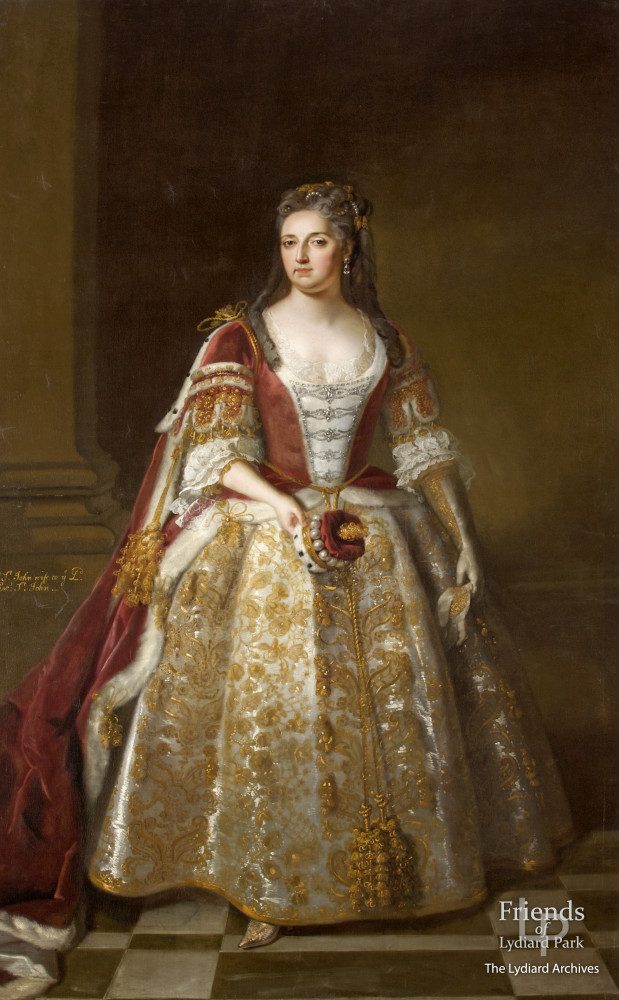
Portait of Angelica 1721. Like her late mother-in-law Johanna, Angelica was also on cordial terms with royalty, providing King George II with a yearly supply of peaches grown in the Battersea gardens and stewed in rum.
Particularly impressive to onlookers was the procession of peers and peeresses who walked from Westminster Hall to the Abbey via an elevated walkway. One observer, the Swiss traveller César de Saussure, commented that the peeresses were “covered” in the most spectacular jewels and the Queen’s gown was weighed down with them to the extent that she needed help to lift her skirts in order to kneel in the Abbey. After the ceremony, there was an equally lavish banquet held in Westminster Hall. The King’s Champion entered on horseback. The tables groaned under a mountain of food. Once the royal party and peers had left, the doors were thrown open and the crowds rushed in to ransack the Hall of the remaining food and furnishings. It was apparently cleared in half an hour!
The robes that peers wore for coronation were standardised in the late 17th century. The crimson velvet robes were floor length with a slight train at the back, open at the front, lined and edged in ermine. The viscount’s coronet was a circlet of silver-gilt with sixteen silver balls, with a crimson silk Genoa velvet lining, a gold tassel and a band or ermine around the base. You can see the detail faithfully replicated in the portraits.
If we move forward to the next generation at Lydiard, we have John,2nd viscount St John painted in coronation robes and a matching portrait of his wife Anne Furnese. The robes look identical, even down to the white stockings and crimson shoes that Henry and John are wearing. Anne’s gown appears the same as Angelica’s one, trimmed with lace and with sumptuous golden embroidery and truly splendid golden tassels. Can it be that these are the original Georgian coronation robes, repurposed for the next generation?
A look at the dates of the paintings and the sitters would seem to confirm this. The portraits of Anne and John are dated to 1745. John died only three years later and Anne the year before him. Sadly, neither of them had the chance to wear coronation robes at a real event as the next coronation was that of King George III in 1761.
Saussure was in the spectator galleries at the lavish banquet held afterwards in Westminster Hall. He described with admiration the technique used to ensure that the candles in the forty chandeliers were all lighted almost simultaneously upon the king’s entry, and the mock chivalry of the The leading composer of the day, George Frideric Handel, was commissioned to write four coronation anthems, including the mighty ‘Zadok the Priest’.
